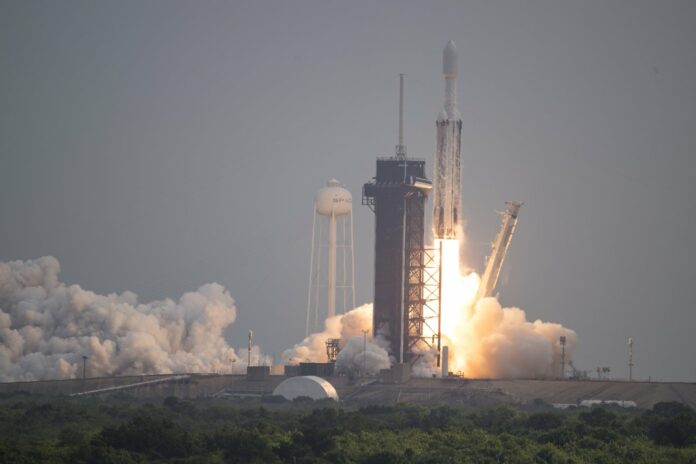KENNEDY SPACE CENTER, Fla. — NASA’s Psyche spacecraft is on its voyage to an asteroid of the same name, a metal-rich world that could tell us more about the formation of rocky planets.
Psyche launched at 9:19 a.m. CDT today aboard a SpaceX Falcon Heavy rocket from Launch Pad 39A at NASA’s Kennedy Space Center in Florida.
Integrated onto the spacecraft is the agency’s Deep Space Optical Communications technology demonstration, a test of deep space laser communications that could support future exploration missions by providing more bandwidth to transmit data than traditional radio frequency communications.
“Congratulations to the Psyche team on a successful launch, the first journey to a metal-rich asteroid,” said NASA Administrator Bill Nelson. “The Psyche mission could provide humanity with new information about planet formation while testing technology that can be used on future NASA missions.
“As Asteroid Autumn continues, so does NASA’s commitment to exploring the unknown and inspiring the world through discovery.”
Less than five minutes after liftoff, once the rocket’s second stage climbed to a high-enough altitude, the fairings separated from the rocket and returned to Earth. About an hour after launch, the spacecraft separated from the rocket, and ground controllers waited to acquire a signal from the spacecraft.
Shortly after, the Psyche spacecraft commanded itself into a planned safe mode, in which it completes only minimal engineering activities while awaiting further commands from mission controllers on Earth. Psyche established two-way communication at 10:50 a.m. CDT with NASA’s Deep Space Network complex in Canberra, Australia. Initial telemetry reports show the spacecraft is in good health.
“I am excited to see the treasure trove of science Psyche will unlock as NASA’s first mission to a metal world,” said Nicola Fox, associate administrator for the Science Mission Directorate at NASA Headquarters in Washington. “By studying asteroid Psyche, we hope to better understand our universe and our place in it, especially regarding the mysterious and impossible-to-reach metal core of our own home planet, Earth.”
By August 2029, the spacecraft will begin to orbit the 173 mile-wide asteroid – the only metal-class asteroid ever to be explored. Because of Psyche’s high iron-nickel metal content, scientists think it may be the partial core of a planetesimal, a building block of an early planet. The goal is a 26-month science investigation.
“We said ‘goodbye’ to our spacecraft, the center of so many work lives for so many years – thousands of people and a decade,” said Lindy Elkins-Tanton, Psyche principal investigator at Arizona State University. “But it’s really not a finish line; it’s a starting line for the next marathon. Our spacecraft is off to meet our asteroid, and we’ll fill another gap in our knowledge – and color in another kind of world in our solar system.”
For its six-year, 2.2 billion-mile trip to the main asteroid belt between Mars and Jupiter, Psyche relies on solar electric propulsion. The efficient propulsion system works by expelling charged atoms, or ions, of the neutral gas xenon to create a thrust that gently propels the spacecraft. Along the way, the spacecraft will use Mars’ gravity as a slingshot to speed it along on its journey.
“I’m so proud of the Psyche team, who overcame many challenges on their way to this exciting day,” said Laurie Leshin, the director of NASA’s Jet Propulsion Laboratory in Southern California. “Now the real fun begins as we race toward asteroid Psyche to unlock the secrets of how planets form and evolve.”
Don’t miss out! Subscribe to our email newsletter to have all our smart stories delivered to your inbox.



